

The daring art of Marlene Dumas: duct-tape, pot bellies and Bin Laden. Seven years ago, Marlene Dumas briefly became the world’s most expensive living female artist, a dizzying upward move that was reported, somewhat breathlessly, in newspapers from New York to Tokyo (her 1995 painting The Visitor was sold by Sotheby’s for £3.1m; previously, her prices had stood at around the £50,000 mark).

Apollo and Dionysus in the Representational Painting Family Feud : Painting Perceptions. By Elana Hagler This essay explores the subconscious impulses behind aesthetic choice and offers a framework for a deeper understanding of contemporary representational painting.
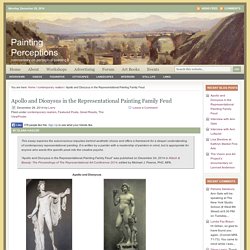
Johannes_Vloothuis: Landscape Composition Rules (1 of 23) Home Member Services Content Areas Tools Fine Arts Links Info Center WC Partners Shop. Verdaccio. Vermeer's Artistic Technique: Painting an Oil Copy of "Girl with a Pearl Earring" One of the advantages of learning from doing a copy is that you are dealing with a known quantity --You already know what the painting you are copying should look like once it is completed, and you also know that it has elements that you appreciate a great deal, and would like to understand better.

Indirect Oil Painting Technique by Reed Kay. The best description for the indirect painting technique is from the out of print book "The Painter's Companion: a Basic Guide to Studio Methods and Materials", by Reed Kay.
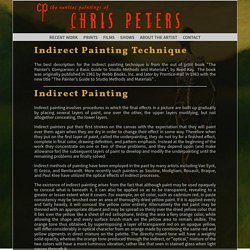
The book was originally published in 1961 by Webb Books, Inc. and later by Prentice-Hall in 1983 with the new title "The Painter's Guide to Studio Methods and Materials" . Indirect painting involves procedures in which the final effects in a picture are built up gradually by placing several layers of paint, one over the other, the upper layers modifying, but not altogether concealing, the lower layers.
Indirect painters put their first strokes on the canvas with the expectation that they will paint over them again when they are dry in order to change their effect in some way. Amazon.fr : Huile raw umber. Peter Doig. Le parcours de l’exposition L’œuvre de Peter Doig s’organise autour de plusieurs grands thèmes qu’il développe de façon autonome et régulière souvent sur plusieurs années : la maison dans les branchages, le reflet dans l’eau, et surtout celui du canoë, symbole de mort.
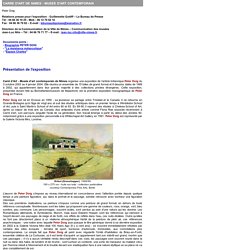
S’il est une adaptation libre de la chronologie, le parcours de l’exposition vise à rendre perceptible la récurrence de ces thèmes et s’organise particulièrement autour de la série des Concrete Cabin représentée dans l’exposition par quatre peintures et deux dessins datés de 1991 à 1996. A partir de 1990, le motif du canoë (ici, Ghost Canoe, 1991) apparaît comme l’une des premières représentations d’un espace dense chargé d’arbres.
Cet espace, totalement lisible bien que répété, traduit l’enfermement, la lenteur d’une situation où tout se redouble, où le réel comme le reflet ont exactement le même traitement. La cinquième salle regroupe des œuvres comprises entre 1996 et 1998. Peter Doig & Chris Ofili. Peter Doig and Chris Ofili, Untitled, 2000, oil on canvas, 16¼ x 12".
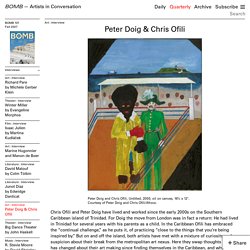
Courtesy of Peter Doig and Chris Ofili/Afroco. Chris Ofili and Peter Doig have lived and worked since the early 2000s on the Southern Caribbean island of Trinidad. For Doig the move from London was in fact a return: He had lived in Trinidad for several years with his parents as a child. 'Echo Lake', Peter Doig. The painting was executed on a single piece of fairly heavy-weight cotton duck canvas, with a double thread in both warp and weave directions, that has been stretched around an expandable softwood stretcher and attached with staples at the rear.
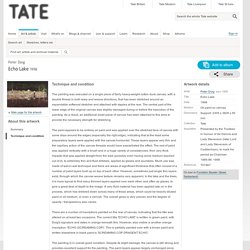
The central part of the lower edge of the original canvas was slightly damaged during or before the execution of the painting. Neo Rauch by Sabine Russ. "A precisely-aimed reach into the immeasurable flow of things.

" Marina, 2014, oil on canvas, 98 1/2 x 118 1/8 inches. Images Courtesy of David Zwirner New York/London. For nearly three decades, German painter Neo Rauch has mesmerized and mystified viewers with his boundless imagination and his ability to give shape to the intangible, the bizarre, and the paradoxical. CLAIRE TABOURET : «Visite d’atelier et entretien» Claire Tabouret est une jeune et talentueuse peintre de 32 ans en pleine ascension.
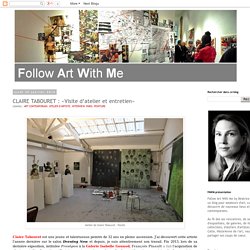
J'ai découvert cette artiste l'année dernière sur le salon Drawing Now et depuis, je suis attentivement son travail. Vermeer's Painting Technique: Drawing. Portrait of a Woman in Yellow (detail of an unfinished portrait showing the underpainting in the shadowed side of the face) Andrea del Sarto c. 1529-30 Oil on poplar panel, 64.3 x 50.1 cm.

Richter's paintings. How did he make them? One of the most fascinating aspects of curating a show is learning more about how works are made - and curators at Tate are privileged to work alongside an amazing team of conservators. I have been talking with Rachel Barker, a painting conservator, about three of the ‘squeegee’ abstractions in the central room in the Richter show. MARK: Rachel, I want to ask you some questions about three paintings in the central room of the Richter show - Room 10. Hans Witschi by Zipora Fried. Hans Witschi, The Watercolorist , 1994, oil on primed cotton, 48 x 36". Images courtesy of the artist. The first time I saw Hans Witschi’s work was at the Locarno Film Festival in 1992, in Paolo Poloni’s documentary Witschi geht , a film on Witschi’s life and his journey to New York. I had my own fantasies about moving to New York at that time and could identify with the main character.
We exchanged studio visits sometime in 2006—we were both living in New York by then and making art in isolation from the “art world,” which gave our work a certain detached intensity and gave us all the time in the world to indulge in deep thought.